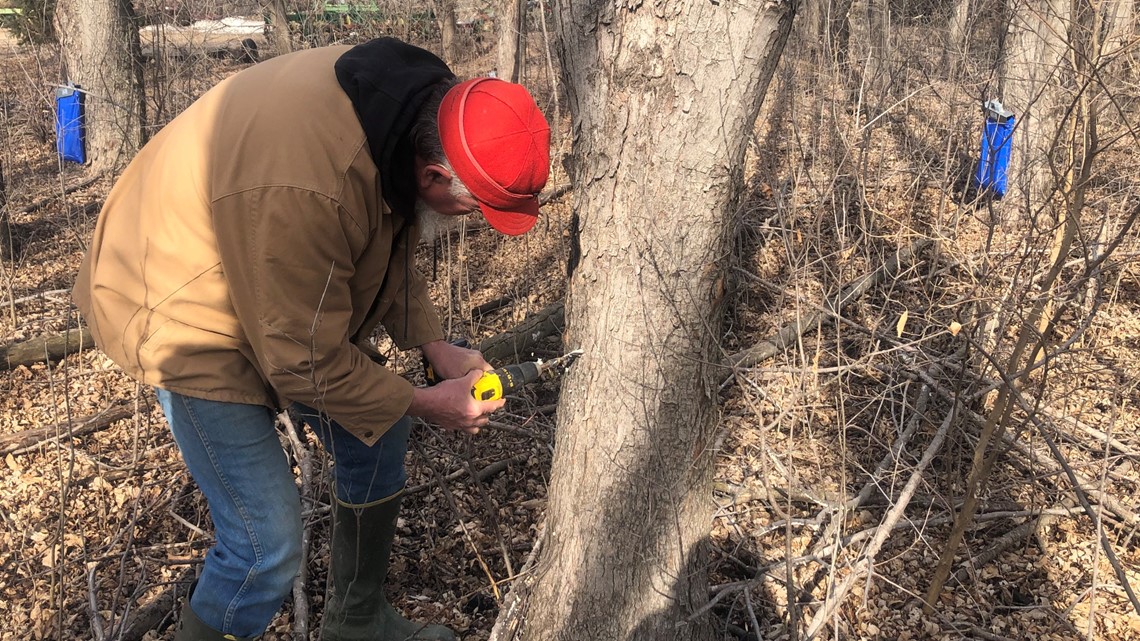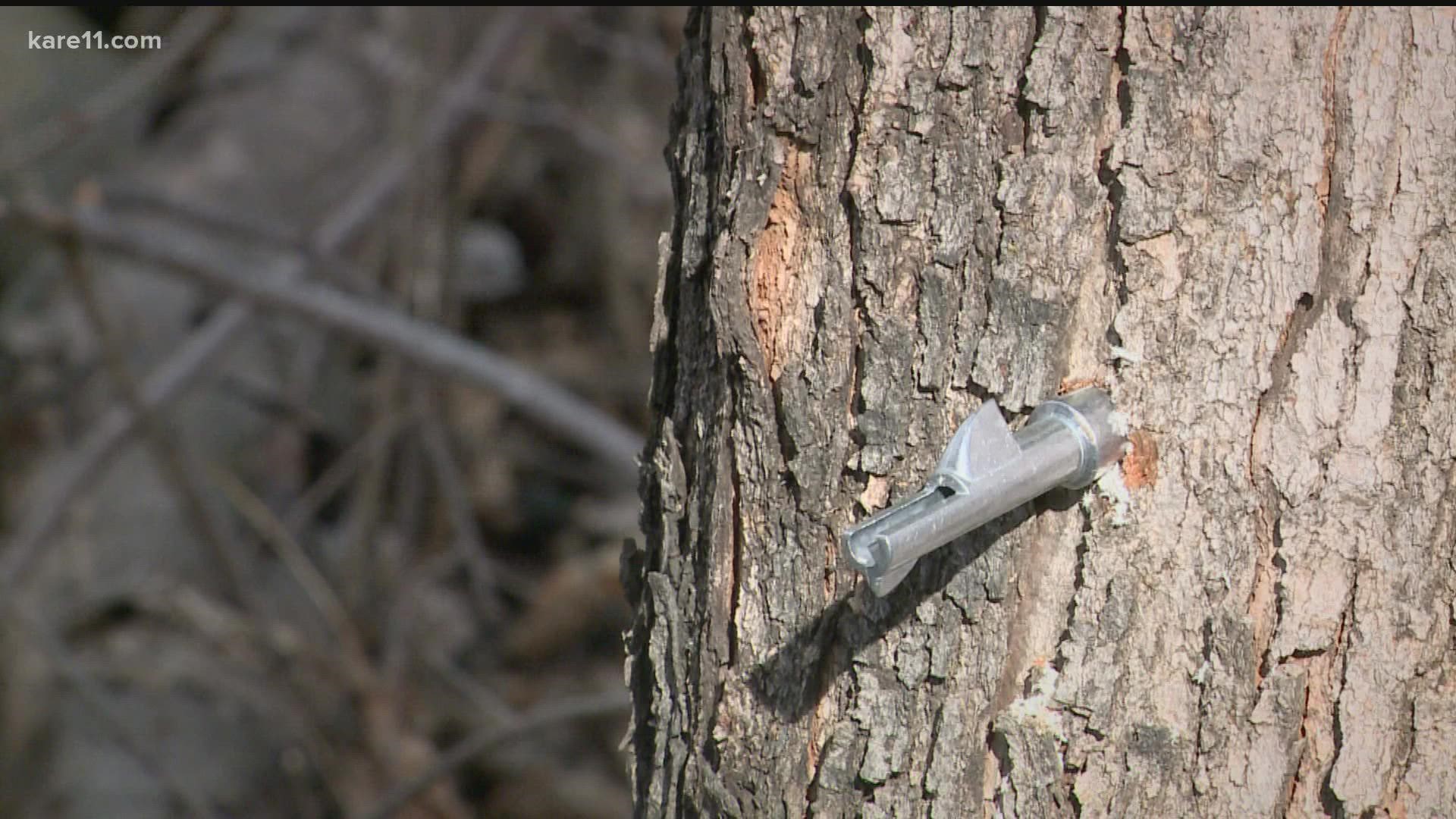JANESVILLE, Minn. — Since he was a boy, Scott Roemhildt has been tapping maple trees on his family's property in Janesville, Minnesota. The land, about 80 miles south of the Twin Cities, is the same terra firma on which his grandfather once tapped.
Roemhildt says in the decades he's been making maple syrup as a hobby, he's noticed a change.
"Just anecdotally, we do tap earlier than we used to. I remember Grandpa putting taps in in April... and now the past many, many years I'm tapping the end of February first part of March," he said.
Roemhildt is the southern regional director for the Minnesota Department of Natural Resources (DNR), which highlighted his experience on the agency's web page about the impacts of climate change in Minnesota.


While Roemhildt's experience might be anecdotal, the data on warming temperatures in Minnesota is not.
"Minnesota winters are getting warmer," said Kenny Blumenfeld, Ph.D., senior climatologist for the State Climatology Office.
DNR data says from 1895 to 2020, the state warmed by three degrees with winter warming two to three times faster than summer. In southern Minnesota, the frequency of temperatures reaching 25 degrees below zero has fallen by up to 90 percent.
"What people in the 1930s or 50s thought of as cold, those are conditions that we rarely, if ever, see in most of Minnesota anymore," said Blumenfeld.
The running of maple sap is dependent on temperatures.
"That sap moves best when daytime temperatures are above freezing [and] nighttime temperatures are below, so you get sort of a piston effect with that sap," Roemhildt said. "That variation in temperature runs the sap through the trees."
Roemhildt says the quality of the sap is the same, the only difference he's noticed is the timing of the runs tend to be earlier.
Blumenfeld stresses that changes to climate are based on trends, not individual seasons.
"Even as we’ve been getting warmer in the winter time, we still have these ups and downs that we experience along the way," Blumenfeld said. "So just because we have a warming trend that does not mean that we’re somehow immune to really cold winter days... it’s just that they’re less frequent and they tend to be less severe than they used to be."
Watch more WeatherMinds:
Watch the latest deep-dives and explainers on weather and science in our YouTube playlist:

